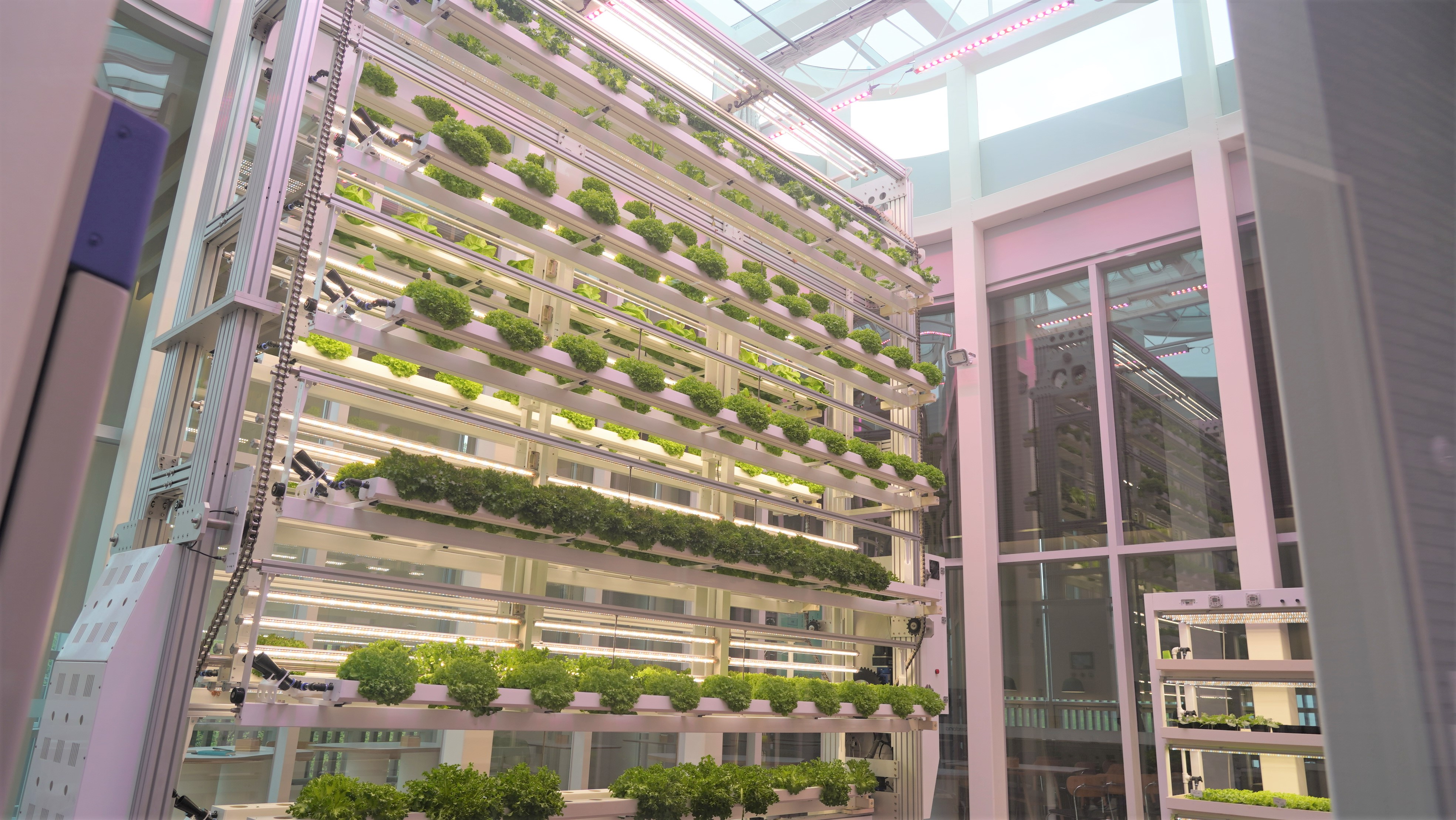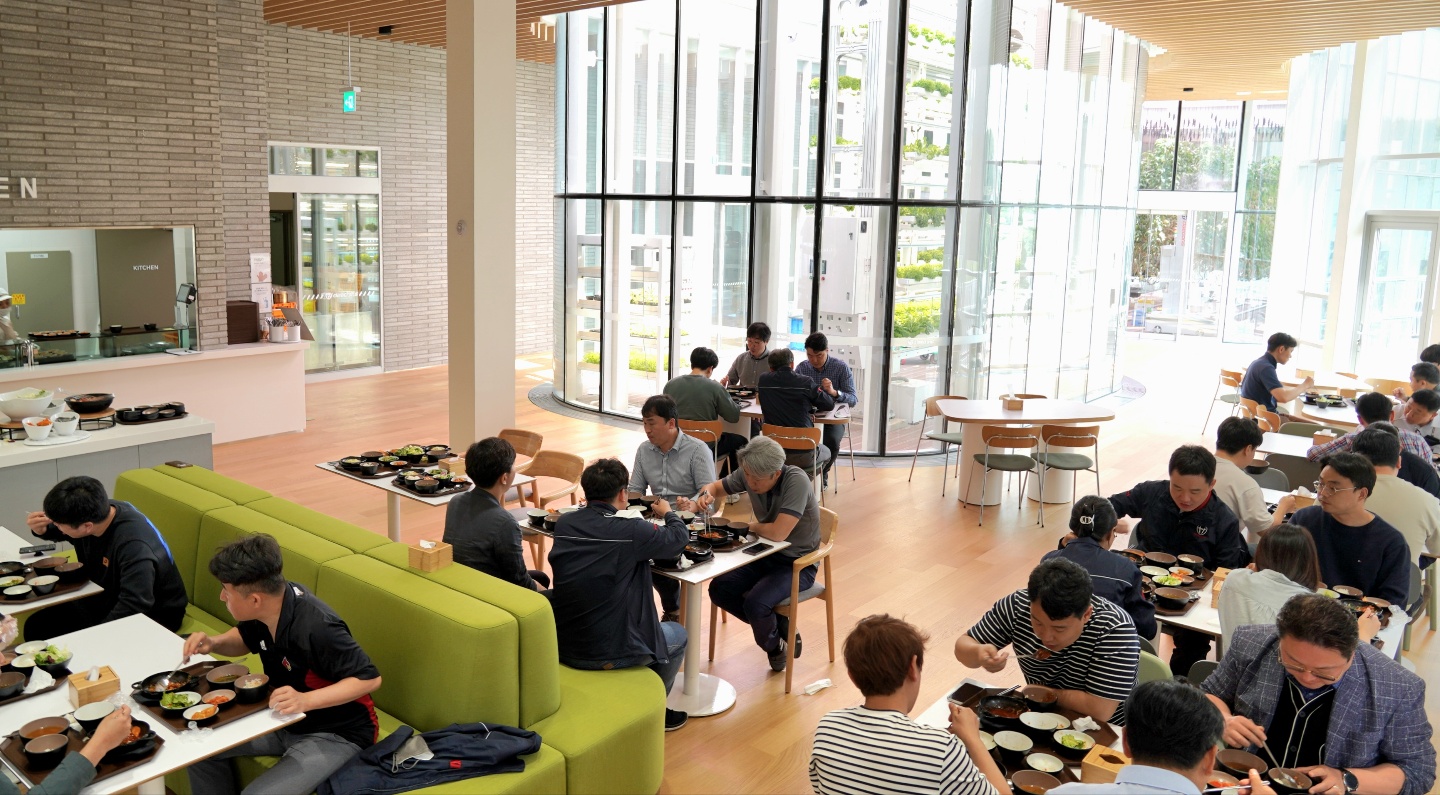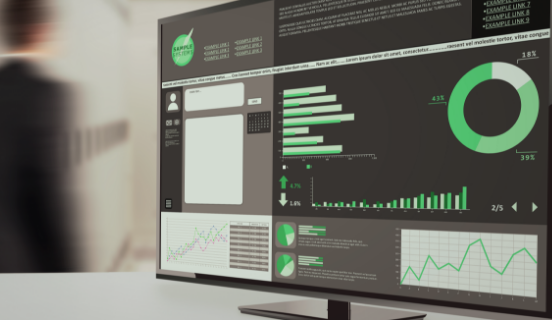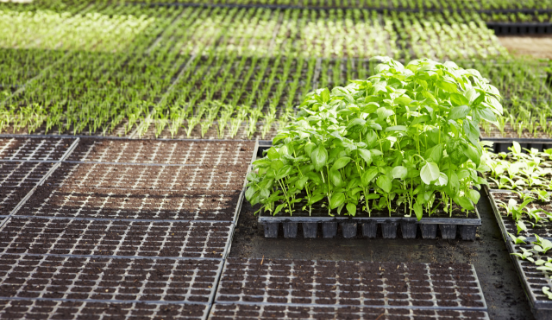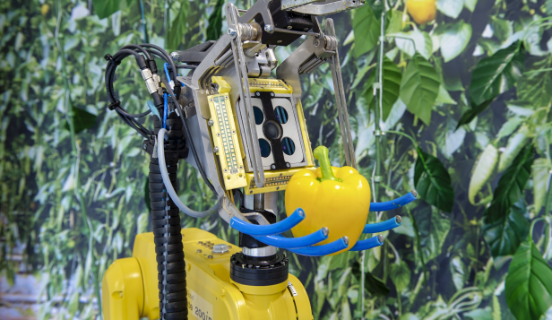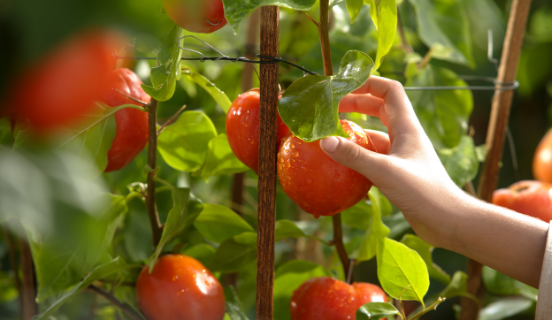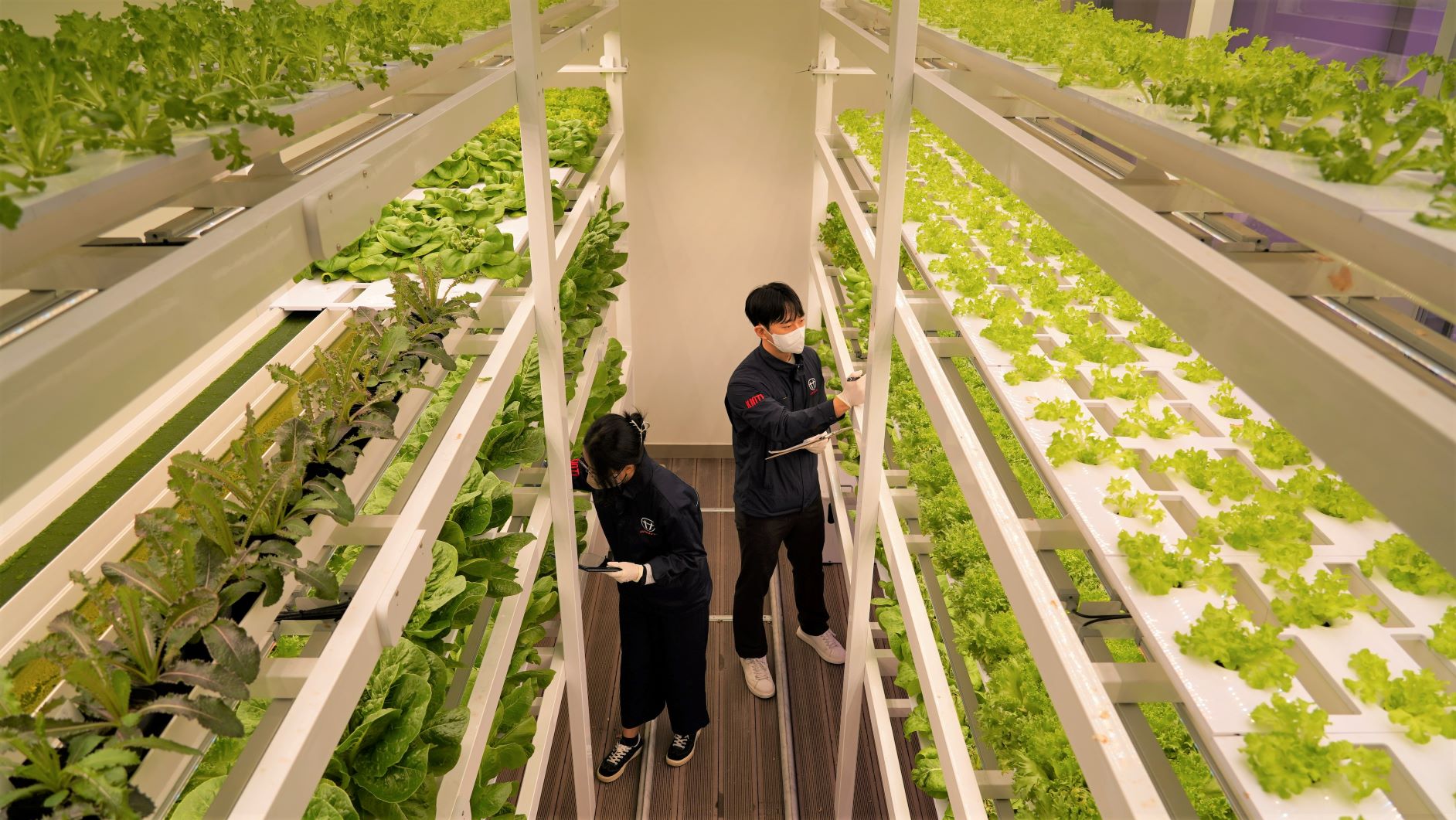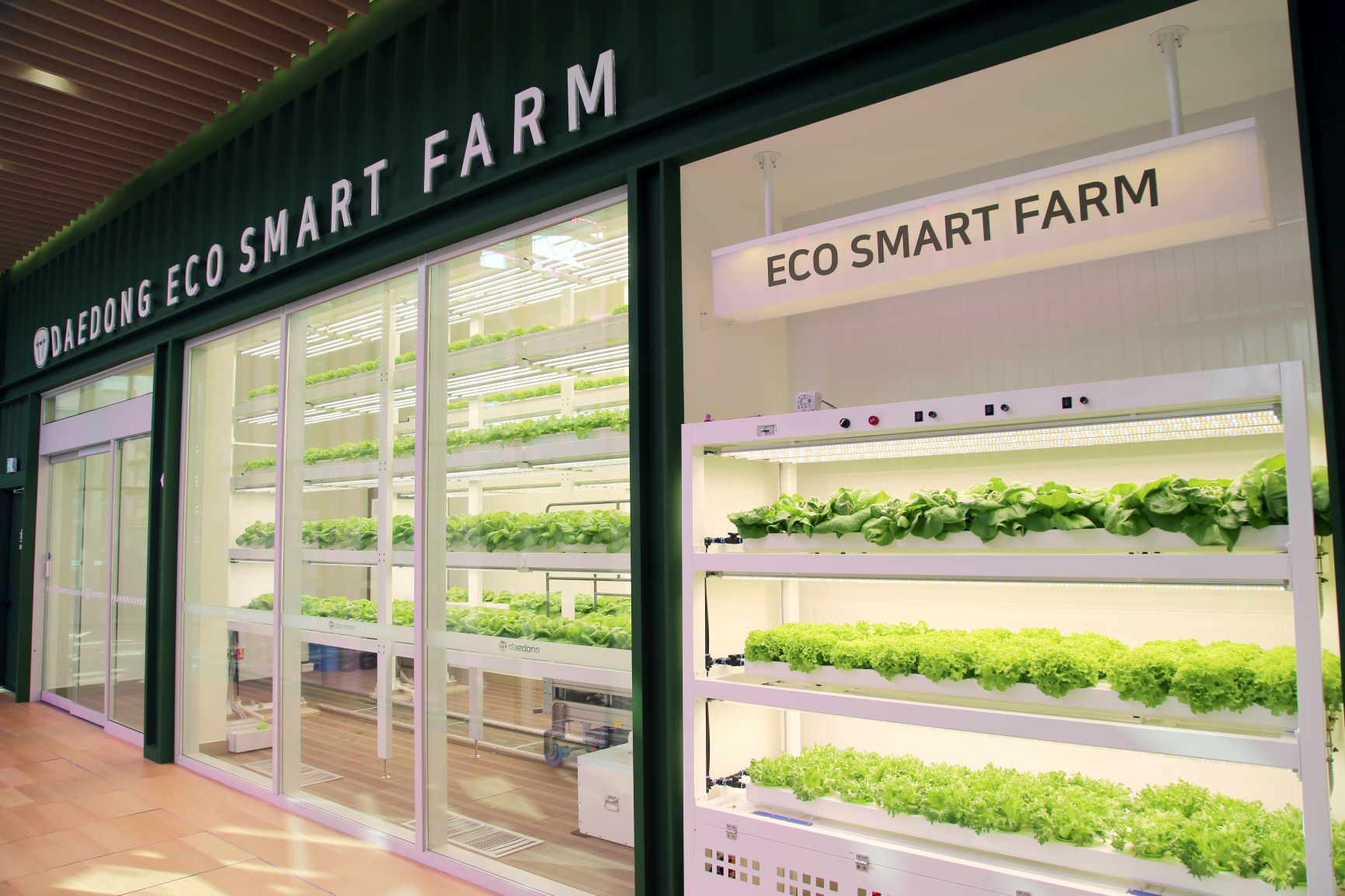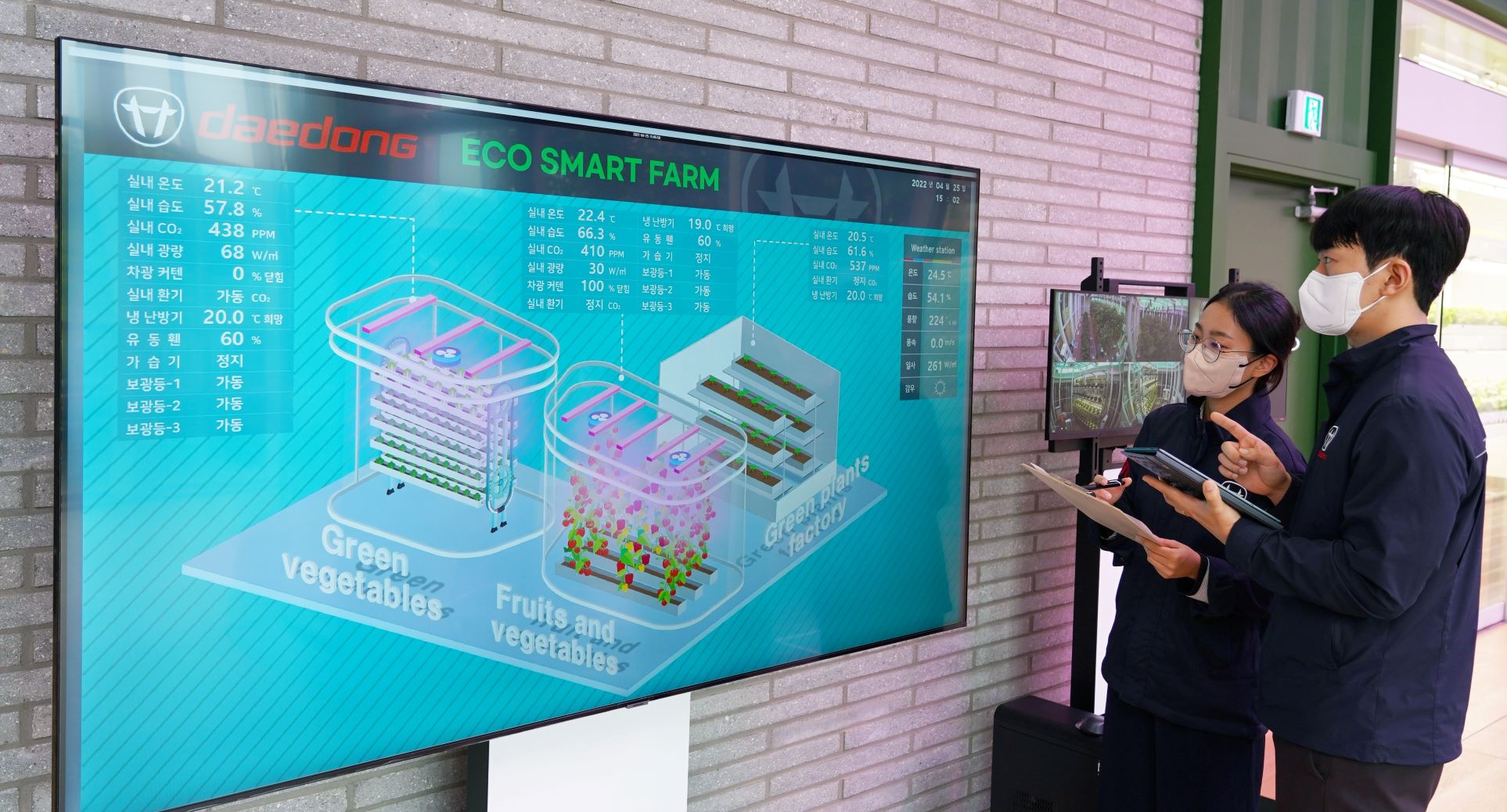 대동 DAEDONG
대동 DAEDONG
Innovation for the Future Smart Farming
Setting standards for future agriculture technology
- HOME
- Innovation
- Smart Farming
Daedong sets the standard for future agriculture with “smart farming” technology that delivers solutions across the entire agricultural cycle.
Innovatoin for the future, Expansion for a better society
Daedong R&D Center helps provide solutions and standardize smart farm technologies that fit into each step of the agricultural cycle, from researching new crop varieties to developing cultivation technologies, environmental control, sales of highly functional raw materials, and forecasting services. Daedong also works on advancing precision farming technology to provide optimal solutions through agricultural work planning, soil environment, and growth, as well as yield measurement and analysis.
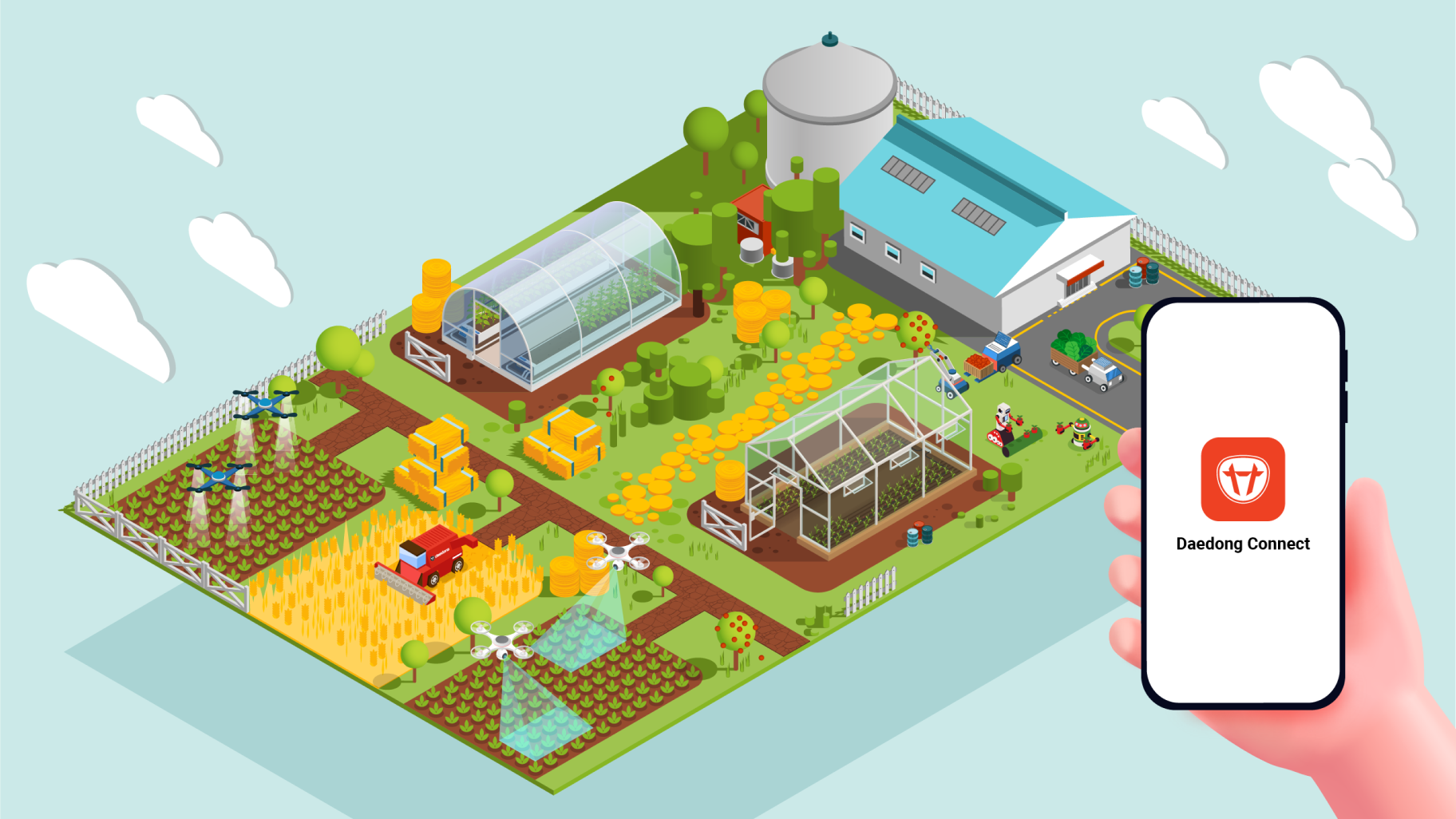
Drone solutions
Collects image information throughout the growth and harvest cycle using multispectral cameras
The standard of future agriculture technology, Smart Farm
A smart farm refers to a farm that can maintain the optimal growth environment for crops and livestock remotely and automatically by combining advanced ICT technology with the greenhouse and barns. It creates the optimal growth environment based on the crop’s growth data and environment data (temperature, humidity, CO2 concentration, amount of light, etc.). A smart farm, such as a smart greenhouse, a smart orchard, or a smart livestock farm, enables higher quality and productivity with less agricultural resources, like labor, energy, and nutrients.
-
Identifying new materials and ingredients
Daedong identifies and develops functional materials and ingredients linked to healthcare, such as health functional foods.
-
Developing cultivation technology
Daedong conducts research on cultivation solutions for the purpose of boosting yield and demonstrating functionality in connection with greenhouses, plant factories, and test beds for crops.
-
Ai-driven comprehensive environmental control
Daedong analyzes environment, growth, and harvest data using an AI model to create the optimal growing environment for crops.
-
Raw materials and ingredients
Daedong supports the production of food that meets various consumer trends by selling raw materials and ingredients for individual verification as health functional foods.
-
Raw materials and ingredients supplied to F&B
Daedong helps produce highly functional crops to develop food products with manufacturers and satisfy consumers.
-
Compiling agricultural big data
Daedong provides data to create valuable services for agriculture-related companies by analyzing R&D, cultivation, harvest, and distribution data.
-
Environmental forecasting service
Daedong forecasts the temperature and humidity inside simple greenhouses to support the decision-making of farmers.
-
VISION solution
Solution to improve yield and quality, while preventing disease in each section of a greenhouse using RGB cameras
-

Identifying new materials and ingredients
Daedong R&D solves the difficulties faced by Korean natural products and bio companies in finding materials and ingredients to commercialize.
-
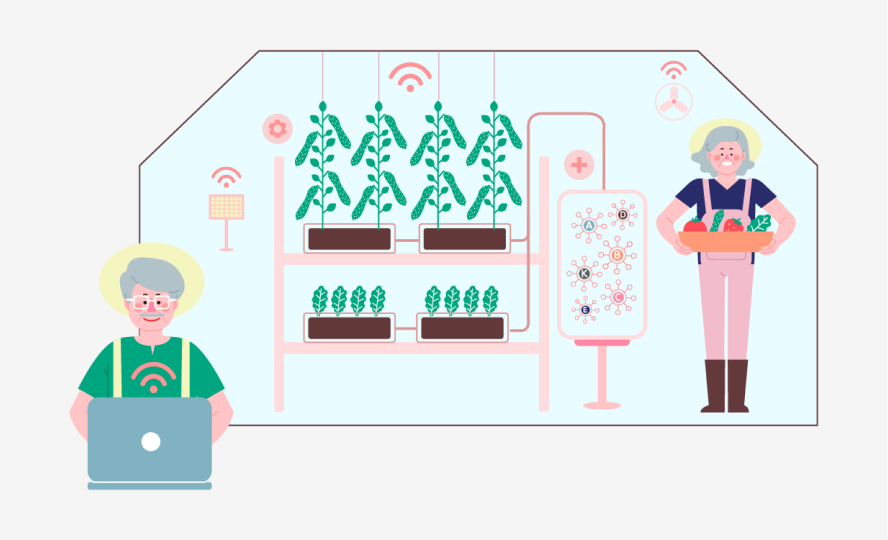
Developing AI-powered optimized cultivation technology
Daedong distributes advanced technology to help farmers grow high-value crops at any farm, and ensure optimal production/quality by controlling the environment with AI technology.
-
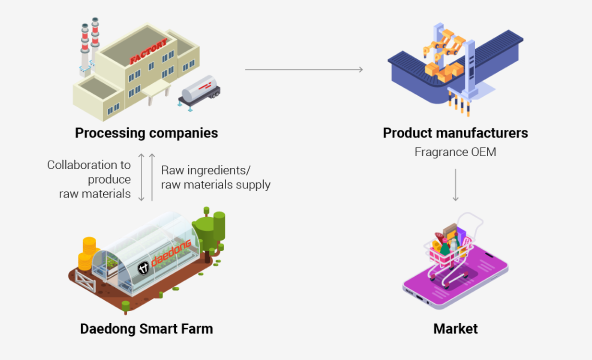
Raw materials and ingredients
Daedong provides services to companies by minimizing the trial and error in developing individually approved functional raw materials/ingredients for various natural products and green bio companies, which helps reduce cost and speed up development.
-
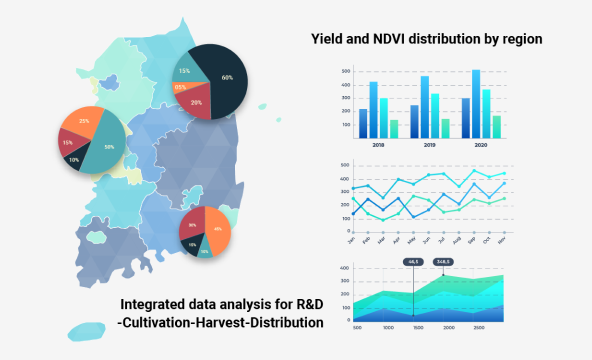
Building an agricultural big data platform
Daedong drives the development of digital agricultural platform services by collecting and analyzing agricultural data on crops/environment by region, and by providing the results to companies.
Daedong Seoul R&D Center
Daedong has a smart greenhouse in Seoul where it grows its own crops to research and demonstrate smart
farming solutions that could become essential to future agriculture.
This greenhouse uses a myriad of automated equipment (▲LED light source distributor, ▲automatic feeder and
drainage, ▲cooling and heating equipment, ▲mist sprayer, ▲nursing stand, ▲growth monitoring robot, and
▲complex environment controller) to monitor the growth environment in real-time and control temperature,
humidity, illumination, ventilation, nutrient solution (liquid fertilizer), etc. to create the optimal
environment for growing each crop.
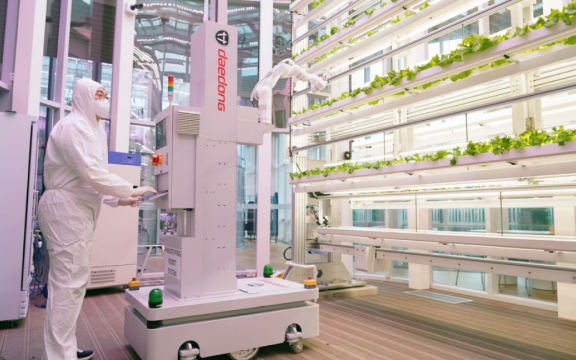
R&D1 Leafy Vegetable Cultivation Room
Leafy Vegetable Cultivation Room / AI growth monitoring
Vertical rotating-type
Light source distributor
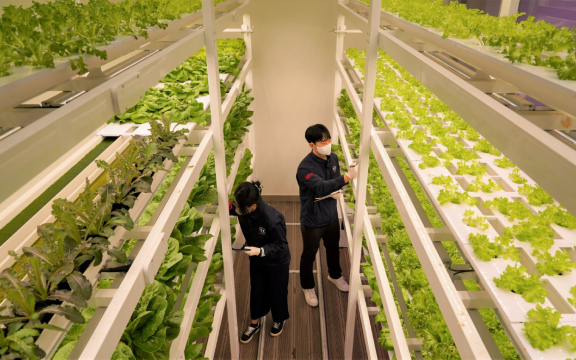
R&D2 Container-type Plant Factory
Developing functional crop varieties (plant factory-type)
Vertical farm
Healthcare
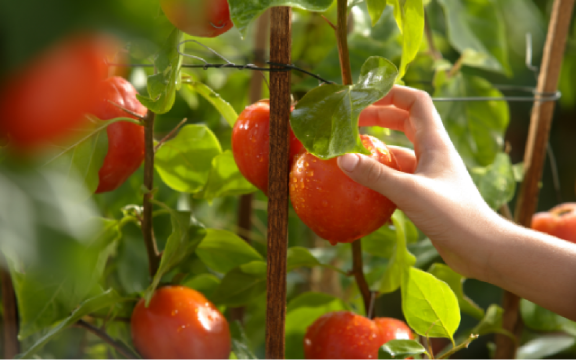
R&D3 Fruit and Vegetable Cultivation Room
AI environment forecast and control / developing fruit and vegetable growth models
Strawberries, tomatoes, paprika, subtropical crops
Precision agriculture solutions
Daedong goes beyond making work at the farm more efficient and unmanned with smart agricultural machinery
- it develops precision agriculture solutions to usher in the era of smart agriculture in open fields.
Depending on the customized solutions for each agricultural environment, such as weather, soil, and crop
growth conditions, Daedong's agricultural machinery or agricultural robots can determine tasks on their
own and perform the work instead of people.
Using a geographic information system, the company maps farmland and analyzes vegetation indices to
recommend work methods, timing, and products for each stage of agriculture, which saves costs while
maximizing production.
-
Farm work plan
Daedong helps establish plans for various tasks required across a farm, such as tillage, seeding, transplanting, and harvesting as well as fertilizing and pest controlling.
-
Soil monitoring
Daedong provides diagnostics and monitoring services for each patch of soil using its soil composition analysis.
-
Customized prescriptions for each farming lot
Daedong provides fertilizer prescriptions for each farming lot based on the results from soil and growth data analyses.
-
Drone imaging/pest control
Daedong collects video data from the entire growth cycle using drones to reduce labor needs and increase work efficiency using drone fertilization and pest control solutions.
-
Crop growth and cultivation maps
Daedong provides customized growth monitoring services such as forecasts for vegetation vitality or abnormal growth by analyzing video data collected using drones.
-
Reducing fertilizer use
Daedong calculates the optimal amount of fertilizer and saves costs using its variable fertilization algorithm.
-
Increasing yield
Using AI algorithm analysis, Daedong suggests means to maximize harvest, such as forecasting harvest volume and recommending the optimal harvest time.
-
Supporting the decision-making process
Daedong helps farmers make decisions by analyzing and diagnosing soil, growth/cultivation conditions, and harvest cycles.
-

Precision agriculture solutions
Daedong provides optimized solutions for each stage of farming from tillage to harvest using the interconnected data between soil, growth, and harvesting.
-
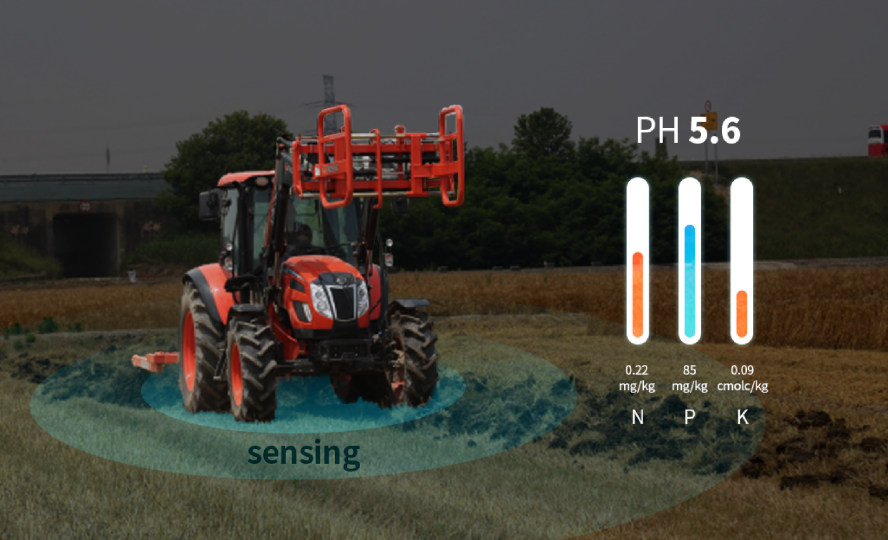
Soil solutions
Daedong diagnoses the health of the soil and recommends the optimal amount and type of fertilizer based on soil composition analysis results.
-
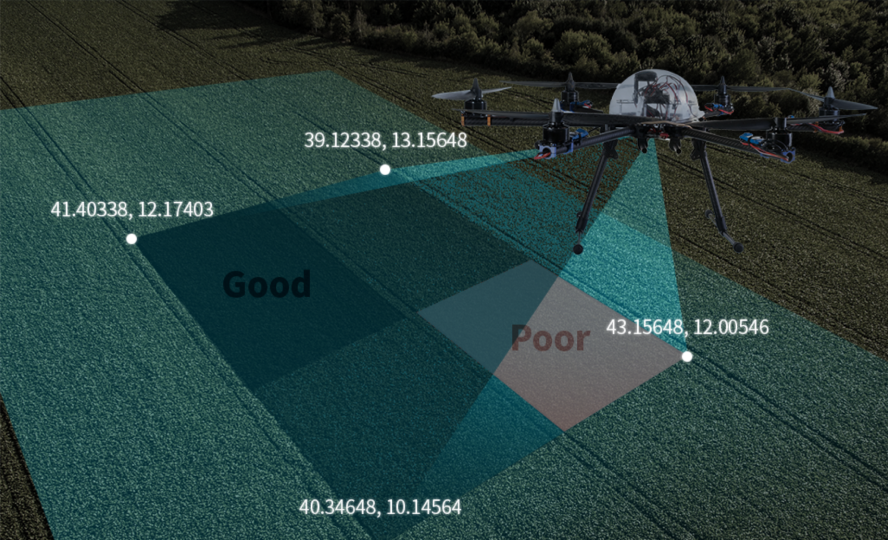
Growth solutions
Daedong collects data across the entire growth cycle of crops and provides GIS-based growth monitoring services as well as fertilization and pest control solutions.
-
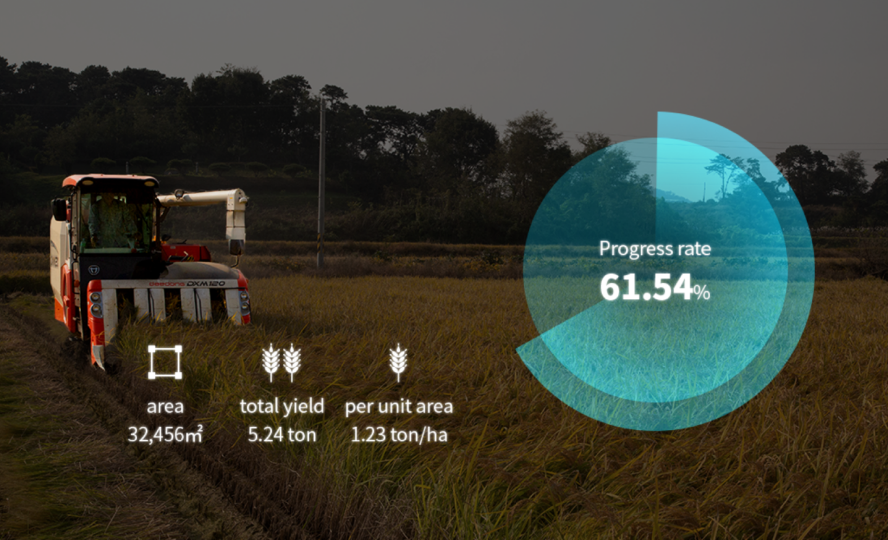
Harvest solutions
Daedong suggests means to maximize crop yield and quality, such as yield forecasts and calculations on the optimal harvest time based on information collected on the cultivation environment.
















